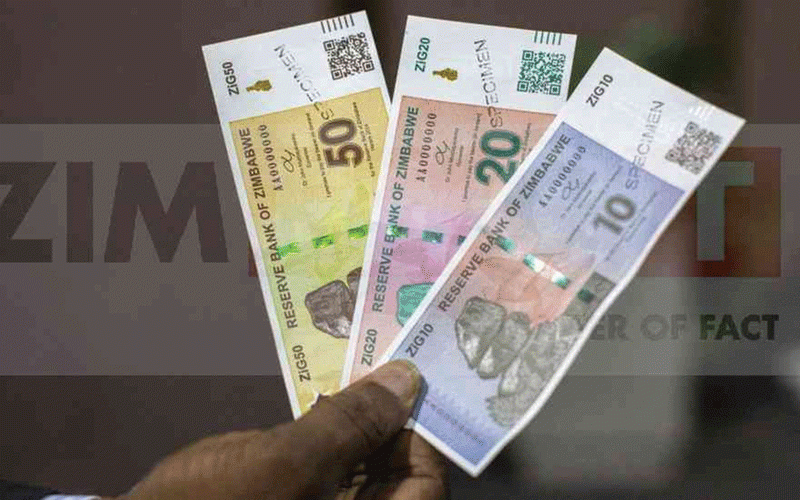
THE Insurance and Pension Commission (Ipec) produces quarterly reports on various facets of the insurance and pension industry.
These reports give a detailed overview of the performance of these industries, including how much has been collected, and paid out, the value of assets and more.
In this article, we will dive into the first quarter of the 2024 pension report and unpack it.
Pension speaks to setting aside part of income during the active working years, such that the money is invested, and one will be able to benefit from it when one retires.
The money they set aside is known as the pension premium or contribution whilst the one they eventually receive after they retire is the pay-out. Pension Funds, therefore, become a critical financier in the economy as it invests the contributions.
According to Ipec, in Zimbabwe, there are currently 1 005 952 pension members, of which 979 563 are contributors and the rest are beneficiaries. The labour force survey by Zimstat indicated that 3 289 853 people are employed in Zimbabwe, meaning for every three people employed; only one person is under a pension scheme.
However, membership has been slowly increasing from slightly over 900 000 in the first quarter of 2020 to current levels.
These members are under 966 pension funds, 926 of which are defined contribution funds whilst only 40 are defined benefit funds. Defined benefit funds promise a predefined payment after retirement whilst the defined contribution fund simply pays back your investment plus investment returns.
- Village Rhapsody: Govt must ensure that devolution works
- Village Rhapsody: Govt must ensure that devolution works
- Currency crisis hits capital markets
- Worthless Zim dollar notes clog banks
Keep Reading
The assets of the pension fund industry have been decreasing over the years whilst the number of members has been increasing, resulting in an overall decline in the wealth of pensioners.
Put differently, hypothetically speaking, if all the pension funds were able to liquidate their assets at the value that they accounted for and distribute all the proceeds equally to their members, each would walk away with US$1 646.
If this hypothetical exercise were carried out in 1Q22, the number would have been US$3 591. One would argue that the contributors are at different stages of their contribution term and cannot receive equal amounts, but the bottom line is that the wealth of the pensioners is decreasing.
These assets are concentrated in investment properties, listed equities and prescribed assets, with those three making up over 80% of the assets.
Of these assets, only US$406,3 million representing 24% is in foreign currency. Investment Properties alone accounted for 41% of the assets, a 6 percentage point decrease from what it was same time last year.
The good thing about investment property and other non-monetary assets is that they are a hedge against inflation which has plagued the nation for the longest time.
However, the downside is that some of the investments properties are in the CBD and have not performed well as companies are moving business away. The value of investment properties is also estimated not realised value-based on transactions.
Pension funds are also a big player in the stock market, with 31% of their total assets invested in these instruments. One of the exchanges in the country, the Zimbabwe Stock Exchange (ZSE) which is the biggest and oldest in the country was negatively affected by government intervention through S.I. 103 A of 2022.
The fortunate thing is that some of the measures have since been reversed and the pensioner investments in that sector might recover.
Besides assets, another important metric to pay attention to when analysing pension funds’ performance is income. Income in this case refers to investment income, administrative fees, fair value gains and commissions amongst others.
The foreign currency component of income was US$49,52 million and 92% of that income was realised income.
The major source of income was fair value gains on investments, constituting 79,9% of total income, whilst contributions by members constituted only 4,68% of total income.
A number that works hand in hand with the income is the expenditure. Of that expenditure, 62% went towards paying out the beneficiaries whilst the rest went towards administrative expenditure.
A metric that becomes automatically important is the total expenses to contributions and pensioners are better off if this number is kept lower. This number was 44% and has been falling from a peak of 104% in the first quarter of 2022.
At the same time, the contributions to total assets ratio have been steadily increasing over that period from 1% to 3% now.
Analysts’ opinion
The numbers in the pension industry do not paint a good picture, if one in every three employed people is only on a pension scheme, then much needs to be done to increase the pension contributors’ base.
The most important thing besides the payouts after retirement is that these contributions if properly channelled towards investing in the right ideas can significantly improve the economic fortunes of the country.
On the other hand, the current state of the pension industry does not also inspire confidence among potential and current contributors. If only US$6,1 million was distributed to the beneficiaries the entire quarter, and assuming that there are 26 000 beneficiaries, that translates to US$261 per quarter or US$81 per month.
In the current economic environment that money is not enough to either maintain a lifestyle or to motivate someone to willingly participate in a pension scheme.
Although it is commendable that total expenses as a percentage of contributions have kept down over the years, the administrative expenses also need to be curbed such that the majority of expenditure goes towards the beneficiaries who are the ultimate owners of the money anyway. That way assists in building confidence in the pension industry.
In conclusion, I think there is still some work needed to ensure that we have a vibrant pension industry that can support the economy.
This work has to be collaboration between all the parties i.e. the pension funds and administrators, the authorities and the working public.
The compensation of value loss during the hyperinflation is another confidence-building step, if conducted well and the compensation is meaningful.
- Hozheri is an investment analyst with an interest in sharing opinions on capital markets performance, the economy and international trade, among other areas. He holds a B. Com in Finance and is progressing well with the CFA programme. — 0784 707 653 and Rufaro Hozheri is his username for all social media platforms.











